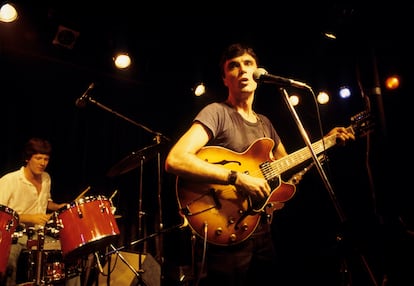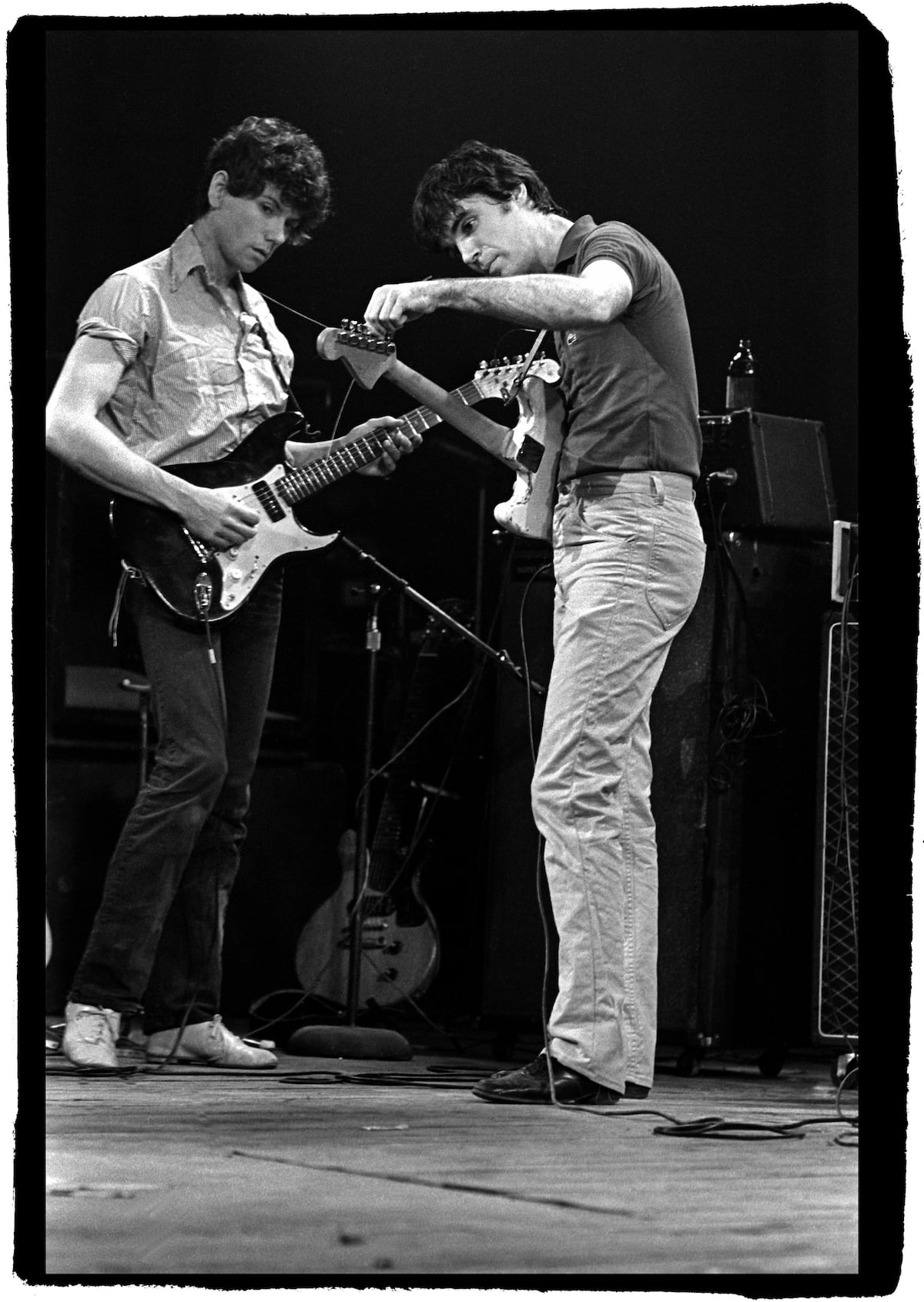When they debuted at New York’s CBGB music club in June 1975, no one would have called them a rock band. Talking Heads consisted initially of just two men and a woman, dressed in polo shirts with short, neatly combed hair, who talked no more than average between songs. They were so deliberately normal that in the end they became the most eccentric group in a graduating class that also produced Patti Smith, Blondie and Television.
Talking Heads wasn’t like anything resembling rock up to that point. And it wasn’t just their image: their musical style was also anomalous. The rhythm section underwent several transformations within the same song while making you want to dance. The guitars, clear and clean, were played with arithmetic intuition. And the lyrics, which turned the ordinary into the extraordinary, were sung by David Byrne who, as Ed McCormack wrote in Rolling Stone, sang “as Tony Perkins would have sung if Psycho had been a musical.”
Novelist Dave Eggers was 12 years old when a friend lent him a cassette containing the first Talking Heads album. Accustomed to hearing Billy Joel and John Denver on the radio, he thought “the people singing were crazy.” The Talking Heads: 77 track that most got to him was the weird Don’t Worry About The Government: “My building has every convenience/ It’s gonna make life easy for me /It’s gonna be easy to get things done/ I will relax alone with my loved ones/ Loved ones, loved ones visit the building/ Take the highway, park and come up and see me/ I’ll be working, working but if you come visit/ I’ll put down what I’m doing, my friends are important.” Eggers would write: “It’s still one of the strangest lyrics anyone has ever sung.”
David Byrne, Chris Frantz and Tina Weymouth met at the Rhode Island School of Design. They wanted to be artists but ended up as musicians making songs from an artist’s perspective. “The pop song is a very efficient and effective medium for conveying ideas,” they wrote in one blurb. “Some terms the band expects to be associated with its image are sincerity, honesty, intensity, substance, integrity and fun.” Their remarkable departure from the norm also confirms the theory that, musically, punk was merely a continuation of what had gone before. The real change came with post-punk, and Talking Heads were probably the trailblazers, rethinking as they did many of the usual rock codes. They did it with the spasmodic rhythm of Who Is It? or with Tentative Decisions and the rhythmic spiral that suddenly becomes a military march to then mutate again to white funk.

Rhythmic muscle was one of Talking Heads’ great gifts, and part of the credit goes to Tina Weymouth, a pioneer who makes up the core of women who, starting in 1976, proved they could play the same instruments as men and be just as innovative. From the get-go, Talking Heads highlighted the Black music influences that all three of them had. The menacing bass line that leads into Psycho Killer is clearly inspired by Play Something Sweet, a track recorded in 1973 by Sylvester when he was still accompanied by the Hot Band. “What sets us apart from the punk bands is that we like KC & The Sunshine Band and Funkadelic,” said Chris Frantz in 1977.
They had released one single — that extravaganza of candor and strangeness that is Love Goes To Building On Fire — and were about to record their first album when they convinced Jerry Harrison to join them (it is said that before that, they had tried to get Arthur Russell on board). Harrison parked his architecture career and enriched the group’s sound with his keyboard and a second guitar. “If we succeed it will be because we are an original group, and our originality will catch on,” he told the critic John Rockwell shortly after joining the lineup.
For the next three years, Talking Heads disrupted the language of pop through a breathtaking evolution. On their first British tour they met Brian Eno and the connection was immediate. Eno worked with them as producer on their next three albums, including the masterpieces Fear Of Music (1979) and Remain In Light (1980). Jonathan Demme filmed them in concert and the result, Stop Making Sense — recently re-released for its 40th anniversary — gave them the popularity that Harrison predicted. Their influence can be detected in bands such as Radio Futura, Franz Ferdinand or Animal Collective.
In Talking Heads: 77 the originality of the band’s approach is already evident. The super deluxe re-release of the album amplifies the concept of what the group was then. It provides demos and alternative takes that reflect some of the crossroads they found themselves at — for example, the tension between the popular and the experimental that accompanied them until 1984. Among the tracks are two alternative versions of Psycho Killer — one with Russell himself on cello — the song that propelled them into something close to the mainstream. There is also a concert recorded at CBGB’s in the fall of 1977, when their debut was released, in which their particular sound stands out. The boys and girl who looked like innocent college students were actually four intellectuals conspiring about what the rock of tomorrow should sound like.
Sign up for our weekly newsletter to get more English-language news coverage from EL PAÍS USA Edition


